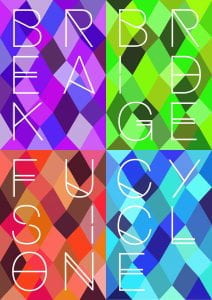A Visual Experience created in Commemoration of Barbara McClintock – Nobel Prize in Physiology or Medicine 1983
Barbara McClintock, ’23, M.A. ’25, Ph.D. ’27 and former scientist at Cornell University, received the Nobel Prize in Physiology or Medicine in 1983.
Barbara McClintock’s discovery of genetic transposition or ‘jumping genes’, bits of genetic material rearranging themselves in maize seedlings, is the key to how individual organisms regulate their development.
Her revolutionary discovery and unique style of research was triggered and based on close sensory scrutiny, observation and documentation of each corn plant, examining changes in color and texture of the pigment in kernels and leaves. Noting that some gained color while others lost it, she learned that those changes did not follow predictable hereditary patterns.
Barbara McClintock believed scientists must “listen to their material” and “let the experiment tell you what to do.” because nature’s complexity exceeds our ability to understand.
Inspired by the graphic and schematic visualizations of Mc Clintock’s findings and her immersive and sensory way of doing research, the interdisciplinary artist Ella Ziegler has developed the poster edition BREAK FUSION BRIDGE CYCLE, in conversation with the soil scientist Johannes Lehmann. The edition of posters takes up Barbara McClintock’s schematic drawings of the chromatid type of the breakage-fusion-bridge cycle and the mosaic of naturally pigmented corn kernels, which vary in color and shape.
This art-science project was first presented on October 15, 2021, concurrent to Ella Ziegler’s lecture as part of the Cornell Environment and Sustainability Colloquium, in the atrium in front of the lecture hall 233 Plant Science at Cornell University, and in the AgQuad. Anyone could pick up a free copy of one of four poster designs, all four versions, or multiples of each. The posters can be arranged in any order (some examples below), creating new bridges, new breaks, new fusions. Through Fall 2021, the posters were still available in front of 233 Plant Science and you can now also download the print files and print your own here. This project is part of The Soil Factory and The Soil Factory Network, creating new questions through radical interdisciplinary collaboration; you can still get your copy and celebrate Barbara McClintock and independent science at The Soil Factory. We are compiling a publication that will be publicly available.
Share photos of your own installation on twitter under #jumpinggenes, and we compile them here.
We are also proposing a public mural as part of the renovations of the Plant Science Building at Cornell, and are searching for funding (feel free to request Cornell administrators to help).






Could such an art project also be imagined as a mural in Cornell’s new Plant Science building? What conversations might ensue in the presence of such an art-science collaboration? The poster project may also serve as a try-out for such an ambitious endeavor, celebrate Barbara McClintock as a trail-blazing scientist, and provide important lessons for the next generation of scientists and educators.

In Barbara McClintock’s schematic line drawing of the breakage-fusion-bridge cycle (archived at the American Philosophical Society), she visualizes and transfers her knowledge in lines that break off, run in parallel, cross over and reconnect. Ella Ziegler recognized these graphic principles in the font Hipsthelvetica, which she used as part of the poster project.

In the poster design, the arrangement of the diamonds, which vary in color and form, is associated/inspired with the irregular and color-changing mosaics of the maize kernels, the researched material which McClintock brought to her groundbreaking discovery.
Ella and Johannes visited the National Women’s Hall of Fame in September 2021, to go through their archives in search of additional information about Barbara McClintock. Already in the first line of the transcript of the interview with McClintock on the day she heard in the news that she had received the Nobel Prize, it said “(laughter)”. And throughout this and other transcripts, the same word appeared. Ella immediately asked the question what role humor plays in McClintock’s life and work. During a conversation that same month with Rob Martienssen, a close colleague of McClintock at Cold Spring Harbor Laboratory, it became even clearer what an extraordinarily gracious and thoughtful individual she was. Ella and Johannes continue to discuss the role of emotion in science and agreed to issue a button with the words “(laughter)”.

